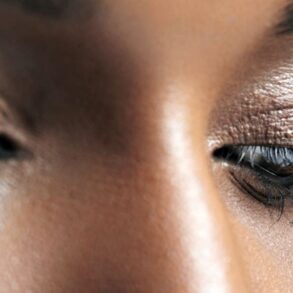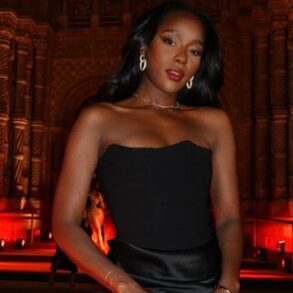Can a region’s geography stigmatize its reputation? South Central Los Angeles is pretty much the answer. The area is located within the city limits in the Southwestern part of LA County.
It’s a rectangular-shaped region placed like a puzzle piece in the heart of Los Angeles. According to a KCET report, it was renamed South Los Angeles in 2003. The area has undergone much unrest and racial oppression, which results in stereotypes by outsiders.
Who would forget the article published by the UK’s Daily Mail in September 2016? The derogatory headline with a subtle hint of racial slur writes about the area where the mother of Meghan Markle resides.
An excerpt from the article: “Plagued by crime and riddled with street gangs, the troubled Los Angeles neighborhood that Doria Ragland, 60, calls home couldn’t be more different to London’s leafy Kensington. But social worker Ragland might now find herself welcoming a royal guest to downtrodden Crenshaw after Prince Harry was revealed to be dating her daughter…...”
It shows that the British press fails to make a clear distinction between the geographical and historical aspects of South Los Angeles—a derogatory statement without much research. In reality, Meghan’s mother lives in the Crenshaw neighborhood of View Park, an affluent part of the region.
South Central LA has a population of over 800,000, which many assume are predominantly blacks. That’s what the outsiders think generally. However, the region comprises different races enriched with culture that needs to be embraced instead of sidestepping because of the stigma around it.
Can it break the stereotype? Many people paint this region badly because of its location. They often stigmatize the area or see it mainly as the African-American community. But beneath it, the place has a different story to offer.
Geographical Aspect Of South Los Angeles
The region is 51 square miles and has over twenty-five neighborhoods and five unincorporated areas. One of the attributes that makes this region invisible is because of the boundaries. It doesn’t have clean boundaries and determines mainly on the imaginary borders.
Take Historic South Central, a prominent neighborhood in the region that is 2.55 square miles. The area is bounded by Washington Boulevard, Vernon Venue, and Flower Street and runs along the historic Central Avenue to the east.
Central Avenue became the epicenter of African Americans after the 20th century. The community-owned various business establishments and residences. It was also referred to as the “Black Belt of the city.”
Another instance is Tom’s Market- A one-story high brown brick building located at the center of the infamous 1992 conflict caused by the Rodney King trial’s verdict. It’s away from the intersection of Normandie and Florence Avenues.
It is situated within the imaginary borders of the South Central but geographically outside of the historic South Central. Leimert, Baldwin Hill, and Crenshaw neighborhoods are also located outside this perimeter.
Transcending Geographic Limit Through Race
South LA demographics have changed massively. The early 1970s saw South American immigrants relocating to this region. The 1980s saw street gangs becoming more powerful and dominant in different areas. These attributes made the outsiders paint this region as notorious or ghetto.
The Crenshaw Boulevard expands over twenty-three miles long with vehicles taking this route from Mid-Wilshire to North Via Central LA. The boulevard passes Crenshaw district, which includes affluent areas such as Windsor Hills and View Park. It ends in the Rolling area, which is also a wealthy location.
Regardless, anywhere there are African Americans, the east side of Interstate 405 is culturally called ‘South Los Angeles.’ It also comes with a subtle hint of derogatory remarks. The same can also be said for border cities such as Compton, Long Beach, and Inglewood, which share similar demographics. These cities are not part of South Central geographically.
Like in any place or area, the inhabitants of South LA live an ordinary life. Movies and pop culture may have shown a different image, but quite a contrast when it comes to reality. It’s not surprising that many have formed a notion of this region based on what they have seen in different forms of media.
Mr. Ronald, a writer and doctoral candidate comments that South LA differs from other parts of Los Angeles. He said it’s a region comprising multiple types of citizens holding different job positions from higher levels to a simple designation.
He also added the region is working class like any other neighborhood in Los Angeles. Furthermore, Ronald said that South LA is also home to well-known personalities like Ray Charles, Tina Turner, and Steve Wonder.
Amidst prominent personalities residing in this region, violence, crime, street gangs, and illegal drugs exist. Since the African-American became the face of South Central LA, the community has suffered from stereotypes the most.
However, when we refer to the 2000 census, Latinos are the majority, comprising 87.2%. The black community makes up to 10.1 % of the historic South LA. Baldwin Hills, Leimert Park, and Crenshaw district are the areas that are predominantly black. The affluent African-American resides in Ladera Heights, Windsor Hills, and Baldwin Hills, located on the West Coast.
However, the place of African Americans in this region is continuously disappearing. Raymond, a South LA resident for almost seventy years, moved here from Texas in 1955.
He states that the biggest issue in the Black community is selling properties the parents have left. One of his pals sold his grandmother’s house and moved to Moreno Valley. His friend lived rent-free in his grandma’s duplex but eventually sold off the property after she passed away.
It’s understandable why some want to leave this area and start anew. Regardless, the region is not what it was years ago. Crime rates have declined by the early 2010s, police patrol has improved, and there is redevelopment. Various initiative programs to lower crime rates and gang activities have also started to improve the community.
South LA may have witnessed some of the worst social unrest and racial oppression, but the region has thrived regardless. Outsiders may think of this place as a ghetto or area with gangs, but not many have seen it beneath the area. The region has more to offer than what it’s portrayed in the media.
People from different races and communities live in peace and acknowledge each other. Once seen as a Black monolith, South LA now comprises multiple races. With time, the existence of various races has somehow broken stereotypes.
Of course, crimes and violence still exist, but they have improved than what it was years ago. People residing in these areas have no complaints, and most have said that their neighborhoods are quiet and peaceful.
A Brief History of South LA And Its Culture
Historically, South Central LA has undergone complex changes that encapsulate spatial inequality. It’s a region that has witnessed some of the largest protests against racial oppression. Despite many unrests and racial wars, South LA has withstood against time.
The 1980s saw massive migration of Central Americans and Mexicans to the South Central. Due to economic instability, many have moved to this region. Despite the indifferences, peace between these communities was maintained as time passed.
Pre-WWII-South Central LA was diverse, like the Eastern neighborhood of Boyle Heights. Mexicans, Jews, Italians, Chinese, Japanese, and Blacks lived together as they were prohibited from residing where the Whites lived.
The region is an architectural delight with prominent historic places. For instance, there is an 80-year-old theatre with Spanish-style art deco in Leimert Park. As per culturela.org., this vision theatre was once run by Fox West Coast Theaters.
Also, there is the famous Los Angeles Coliseum, which is the place of the 1932 and 1984 Olympics. Furthermore, who can forget the Watts Towers? It is a group of seventeen interconnected structures built by Simon Rodia, an Italian immigrant, which took over thirty years.
Kendrick, a sixteen-year-old high school student, is pursuing software coding. He said the people are surprised that many reputed institutions are situated within the area borders of South Los Angeles.
Swiveling his gaming chair, he proudly said there are excellent universities and a Natural History Museum. Also, commenting on his neighbors, he said some are nice, while he grew up with some of them. He added that some are not safe.
It’d be unfair to paint the citizens of South LA as bad people or the region unsafe. The area is blessed with a Mediterranean climate and has fantastic neighborhood policies. In short, it’s an amalgamation of good and bad.
One may encounter the Crips and Bloods gang in these areas, at the same time come across scholars, students, anime nerds, celebrities, doctors, and dentists. There are affluent families, as well as those that are struggling.
Which city or region doesn’t have this socioeconomic disparity? Eventually, you have a narrow mind if you consider everyone in South LA to be avoided. They are not degenerate, nor are they hopeless.
This post was originally published on this site be sure to check out more of their content.





